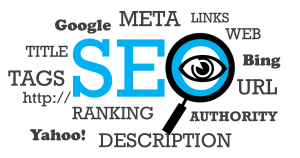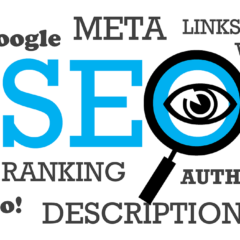Periscope
4 Strategies to Raise Your Dental Marketing Expectations for a Successful New Year
It wasn’t at all what he expected. And the outcome he experienced reminds me that setting your expectations accurately and appropriately can create new beginnings in your dental marketing.
Our grandson recently asked to “chase” his distasteful medicine with a “spoonful” of sugar. I agreed, casually grabbed a spoon from the drawer, dipped into the container, and delivered his request to a smiling face.
His reaction was priceless. He jumped up from the sofa, sputtering, spewing, and reported his distaste for what was served up saying, “That’s CREAMER!”
In my defense, I do not use sugar in my coffee. That said, I’m accustomed to only spooning a dash of creamer into my morning brew.
I instinctively reached for the creamer thinking it to be sugar. We laughed, as did our grandson after he cleansed his palate with the aforementioned requested sugar treat.
Meeting expectations
You should trust that you’ll receive what you expect. That’s often not the case.
Your audience comes to your dental practice or dental service business with a load of expectations. These days what’s expected has shifted a bit due to how information about your services is consumed.
And speaking of information…
Now’s a perfect time to review and hit refresh on informational content that can help you set your dental marketing expectation for the coming months. And being intentional with your expectations can improve your approach to those nagging New Year’s resolutions you feel compelled to make but fail to fulfill.
Consider this post a dental marketing reboot of some common themes from the past few months of posts.
How to Raise Your Dental Marketing Expectations and Experience a Compelling Amount of Success This Year
Renew your thinking about dental SEO
As I’ve written here before, I do not consider myself to be an SEO expert or specialist. I know enough to be “dangerous” in a sense.
And maybe that’s my point. Too much SEO thinking can blind you on your path to online success.
Here’s the deal (and this much I do know) – SEO isn’t about “gaming” or “baiting” your online presence. True SEO creates search expectations around the delivery of useful, informative, valuable content.
This is SEO, of course. But it’s not the SEO you’re perhaps conditioned to believe you must have on your website or else…
Think SEO but…think about it differently!
- Create content around solutions (answers) to the problems (questions) your online visitors are experiencing (asking).
- Make your website content savvy and the SEO will satisfy your online dental marketing expectations.
Check out more related insight here.
Revise your dental website
A website is only the beginning. It’s not a one-and-done dental marketing strategy.
Think of your website as a platform with access to multiple content channels. Those channels are where your dental “consumers” should be able to easily navigate information that (once again) provides solutions (answers) to their problems (questions).
- Lead with your blog/article page. Lose the mindset that you must have high word count, information-heavy, dental-speak fluff on your service/procedure pages (people read what informs them…not what you think they need to know about x, y, or z dental procedure – that’s your world…not theirs).
- Give your website visitors easy to access, readable, visual, audible content. Think blog, YouTube, and Podcast instead of a Wikipedia-like dental procedure glossary. Instead of a tired-does-anybody-read-it-anyway FAQ page chunk those frequently asked questions into compelling blog posts.
Check out more related insight here.
Re-purpose your content
Having a blog/article page that you consistently publish to gives you options. The more blog/article content you have the greater your ability to re-purpose the content.
Remember…
Some website visitors are readers. Some are visually oriented. Some are listeners.
- (For your “readers”) Re-purpose your written content (blog posts, articles, etc.) into e-books, a call-to-action email series, a newsletter, a tip-sheet, etc.
- (For your “viewers”) Re-purpose your written content into a YouTube video (a vlog), a Periscope, a Slide-Share, an Infographic, or other visual content like a GIF, Meme, etc you can post on your social media channels (Facebook, Instagram, Twitter).
- (For your “listeners”) Re-purpose your written content into a podcast or downloadable MP3.
Check out more related insight here.
Re-orient your marketing mindset (think content)
How?
Rinse and repeat the first three points…because content rules!
I raise my expectations that you’ll continue returning here for more dental marketing perspective weekly throughout the year. Thanks for being part of this community…it’s appreciated!
Happy New Year!
3 Strategic Dental Marketing Skills That Enable You to Know Your Audience
 It’s more than a game. At least, that’s how I feel when playing “Go-Fish” with our six year old grandson.
It’s more than a game. At least, that’s how I feel when playing “Go-Fish” with our six year old grandson.
Your dental marketing is more about strategy. How you apply a certain type of strategic skill these days can improve your outcomes.
“Go-Fish” is a simple children’s card game. It’s mostly about matching cute, aquatic characters or associated numbers from the card faces you’re dealt.
There’s nothing really complicated about it. The strategy involves your powers of observation.
Listen and learn mindset
It’s common to make assumptions when you market your dental services. For example, observe much of today’s dental practice marketing promotions and what do you hear?
Smile this, smile that, right? Sure, smiles reveal healthy teeth – that’s the core of dentistry.
Is there more? Yes, there are many deeper benefits provided by dentistry.
Strategically speaking it’s to your advantage to dive-deeper into the longings, desires, needs, hungers, you name it of your patients or clients. This is the essence of strategic observation.
3 Strategic Skills That Tap Into the Deeper Needs of Your Dental Marketing Audience
1-Listen to conversations via social media.
Communication has changed. And depending on your experience or perspective, you would have to agree that in many ways it’s improved.
Mostly the speed and access to communication has shifted dramatically. Data driven conversations (text, social media, direct messages, etc.) are somewhat more common than audible (voice) driven conversations.
This reality impacts how people are accustomed to receiving information. And you must adapt your marketing to connect.
I was recently asked via Twitter (more on that in a moment) about “the listening tools” I use. My reply was somewhat reflexive – “social media,” specifically Twitter.
People use social media to talk, chat, share, boast, sell, market, disagree, promote, preach, pundit, push, encourage, shout-out, support…you get the picture.
Between the lines of all the data driven dialog are needs, desires, frustrations, pains, likes, goals, etc. And the more industry or niche oriented your channels are the more you’ll discover that’s useful for creating compelling content.
- Establish social media connections via Twitter, Facebook, or wherever your “audience” hangs-out. Twitter and Facebook are tops. Sign up (if you’re not already).
- Get acquainted with the channel. For example, Twitter is great for following trends, sharing content, and engaging in quick conversation around content and shared interests.
- Be consistent as you can be. Monitor your social channels regularly. Respond to other’s engagement as quickly as you can. This reveals that you’re listening.
2-Leverage trends by tuning into podcasts, Periscope broadcasts, blogs, webinars, online courses, etc.
Today’s educational output flows from informed authorities across every business niche. You can subscribe to a particular podcast or follow someone’s Periscope and gain loads of insight into what’s current.
- Scan what your industry leaders are talking about, listening to, and sharing. Sign up and follow their informational streams.
- Schedule time daily or at least weekly to catch up on the valuable information you’ve subscribed to or are aware of.
- Curate the content and leverage it into useful resources for your growing “audience.” There are transferable principles across every knowledge base. Explore, find, and share them.
3-Lean into “influencers.”
What’s more important than following your industry leaders? Following their leaders!
Leaning into the crowd exposes you to the person, people, idea, or information at the center of the conversation. Lean in to gain all you can.
Again, physical presence isn’t always necessary, especially in this age of access. I have tons of virtual mentors/influencers that stoke my thinking consistently.
- Use social media to get acquainted with influential industry leaders. Follow, share, and curate what they’re talking about.
- Take a risk and reach out. An authentic, brief comment on a podcast rating or a direct message on Twitter or Facebook could open a door to a new relationship.
- Be grateful for what you gain. Say thanks by sharing their content or referring their services/expertise.
Being more strategic can match you with beneficial outcomes. Otherwise, all I can say is “go-fish!”
Why You Should Change Your Thinking About Dental SEO and What You Should Do Now via Your Dental Website
 Right off the top, I give credit where it’s due. Before I give my shout-out, I want you to take a deep breath and repeat after me, “Dental SEO is not dead, it’s just evolved.”
Right off the top, I give credit where it’s due. Before I give my shout-out, I want you to take a deep breath and repeat after me, “Dental SEO is not dead, it’s just evolved.”
I give due credit to Ryan Stewart for the stream of thought in this post. His related article on Moz.com was spot on.
SEO isn’t dead…just different.
Perhaps you’re a bit worried. The thought of SEO being mentioned alongside the word, “dead” can cause a collective gasp.
Why?
Like most, you might have banked your dental website rankings on dental keywords stuffed throughout every page on your dental website. From the home page to your contact page perhaps you dropped some cash with an SEO-centric web design firm who all but guaranteed you a top local ranking.
Maybe it’s worked…and maybe it hasn’t.
But that’s not the biggest issue here.
The big deal is – SEO has evolved. How the search engines find and rank you and your content has changed and is changing.
Stewart says, “Google shows search results based on what’s best for the user. We can’t just rank for whatever keywords we want.”
He shares examples of searching terms from “best headphones” to “restaraunts” (in a specific city) to “buy a cheap tv” to “plumbers” (again in a specific city). The results in each example returned no websites on the first page search listings.
What did the search results reveal on the first page? According to Stewart’s examples, it depends.
His “best headphones” search revealed not a single product page. All first page results were articles about headphone types, benefits, pricing, etc.
What about “restaurants” (city specific)? No first page results included a single restaurant website, only review aggregators and Zagat ratings. Below the fold (second pages and beyond) the results featured listicles, reviews, and…again…articles.
“Buy a cheap tv” returned product pages in the top five results. Before you say, “Ah-ha…told you…,” they’re all mega-brands. Stewart confirms something you must understand: you’ll never outrank a brand for those type of keywords (unless you spam it up). And again, guess what, articles not product pages ranked at the bottom of the first page.
Are you seeing a trend here?
What about Stewart’s search example of “plumbers” (city specific)? Again top rankings were review aggregators like Yelp and Google+.
Why you should change your thinking about dental SEO and what you must do now to establish your authority online.
Stewart says two things are happening. 1-Google’s full of data and they’re using it based on what users (e.g. you, me, your patients, clients, etc.) want.
2-Google is moving into the “pay to play” era (like Facebook). They’re capitalizing on the massive revenue that comes from advertising.
(Read Stewart’s complete article here for detailed insight and analysis of this entire trend.)
My main take-away from Stewart’s article is this: content rules!
What does that mean for you and your dental SEO?
1-Listen (more than ever) to your “audience.”
What are they talking about? Concerned about? What services do you provide that solves the problems they face?
- Write to that! And write to it a lot.
- Inform your readers based on what you hear them saying to you via your reviews, surveys, chair side conversations, phone consults, in-office consults, treatment plan questions. You get the idea.
2-Create useful content consistently.
Stop playing the tell-them-everything-on-your-main-webpages game. What do I mean?
The days of burying all your informative “eggs” in your website services “basket” (pages) is done. Why?
People aren’t willing to wade through it. And if they did, it’s often full of too much dental-speak that they numb out and click away from the page.
- Start or re-start your blog/article page. This is your new SEO-friendly platform for valuable keyword relevant content.
- Experiment with podcasts, other forms of social media (Pinterest, Instagram, Periscope), and video (YouTube) content channels. Not all are readers. This will appeal to the audio/visual types.
- Link all content back to your website platform. This increases your search savvy-ness.
I recommend checking out Ryan Stewart’s more thorough and highly practical content on this subject. I agree with the essence of it, SEO isn’t dead but it HAS changed.



